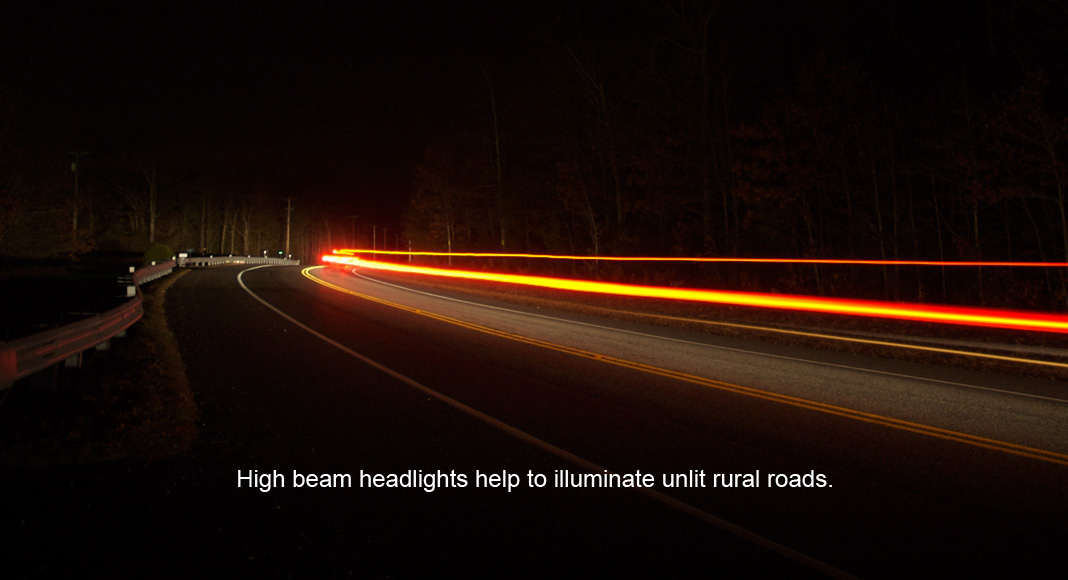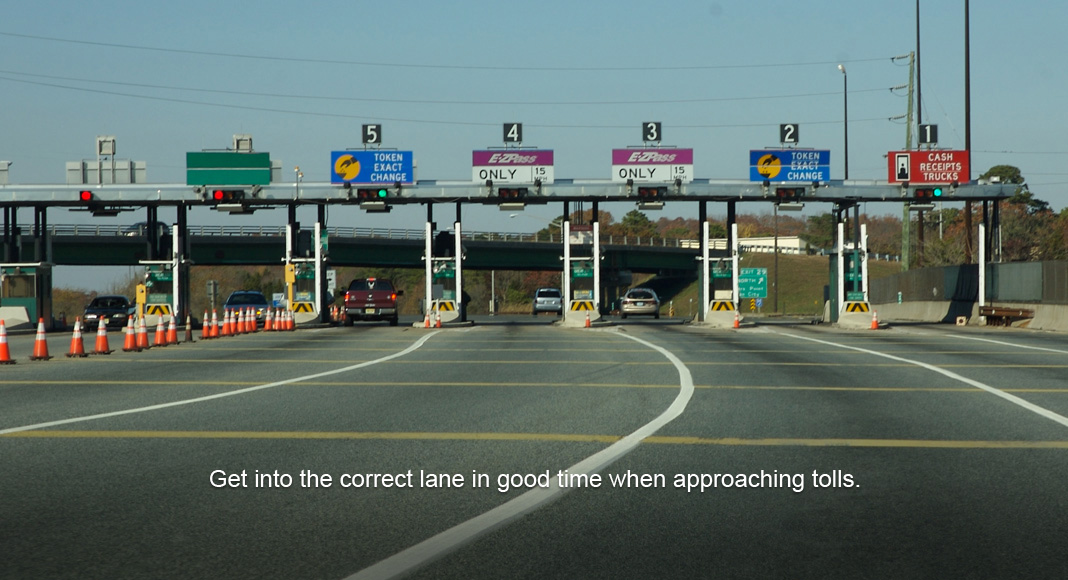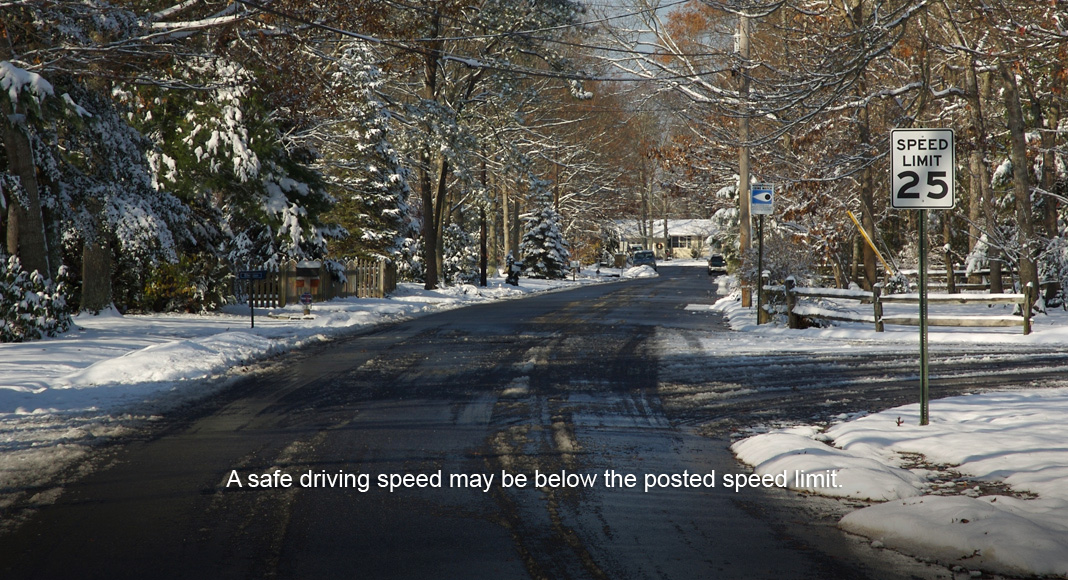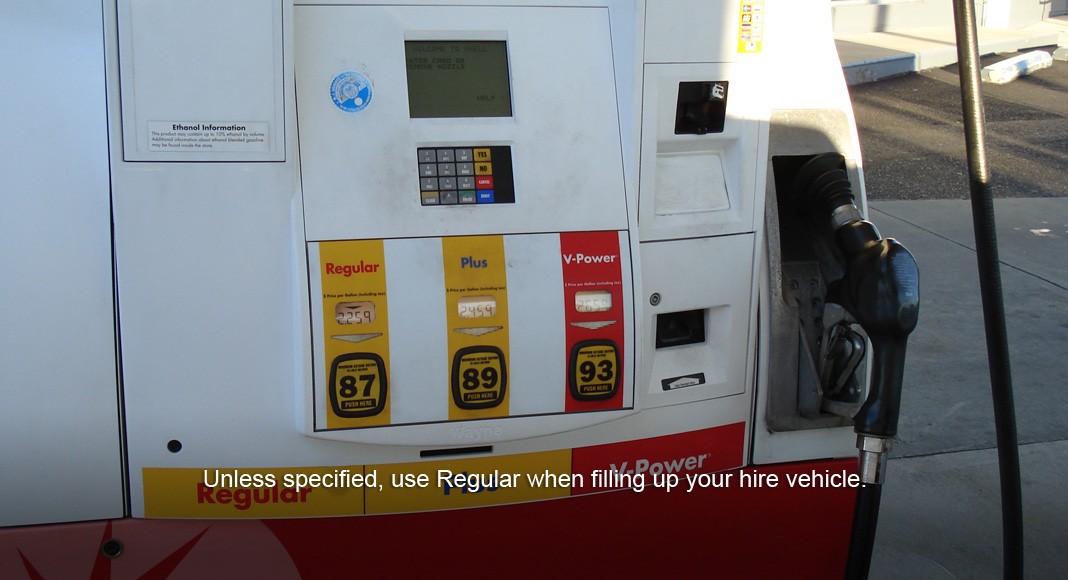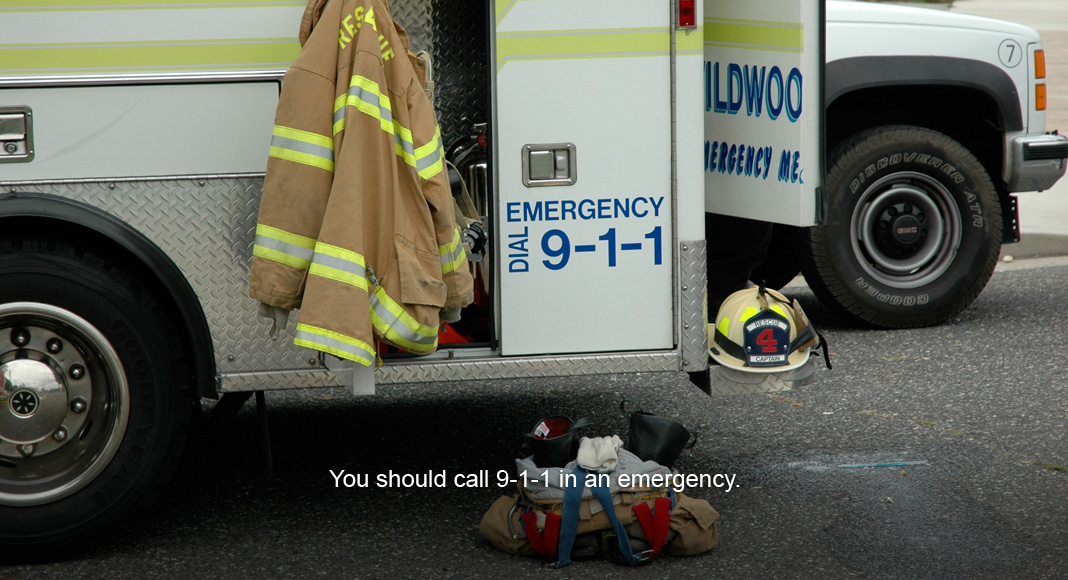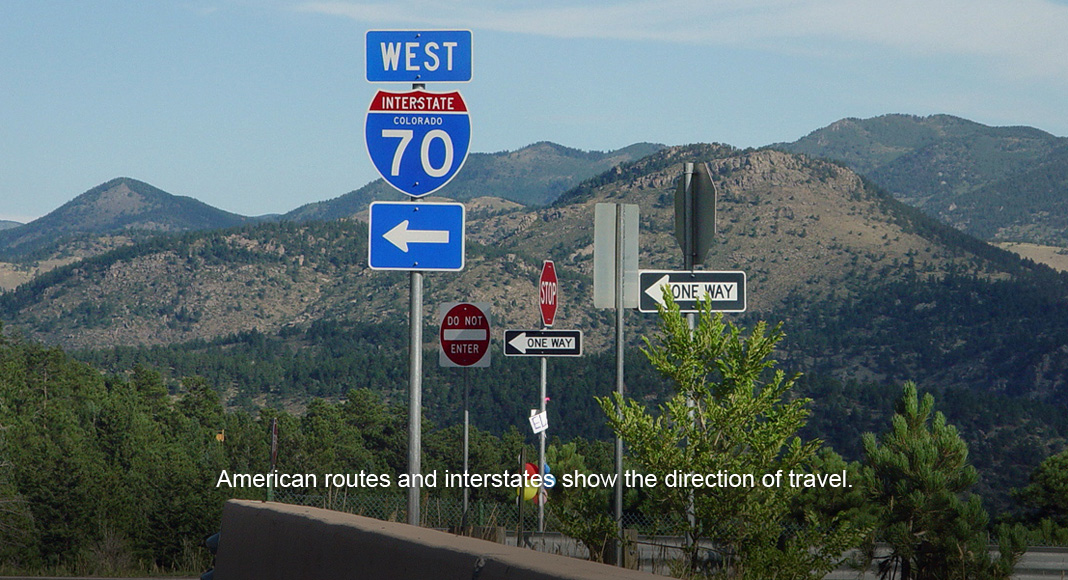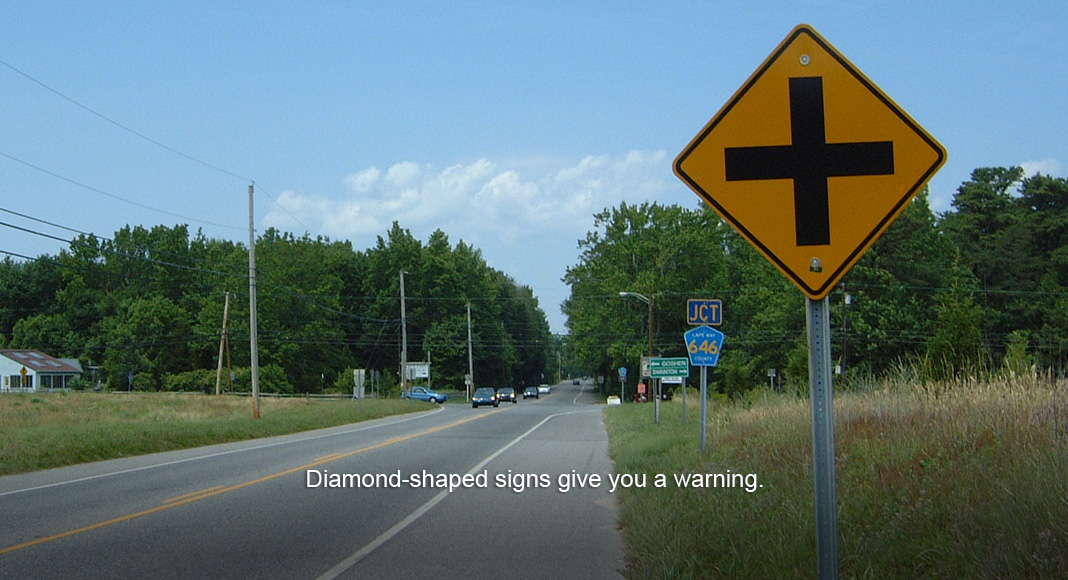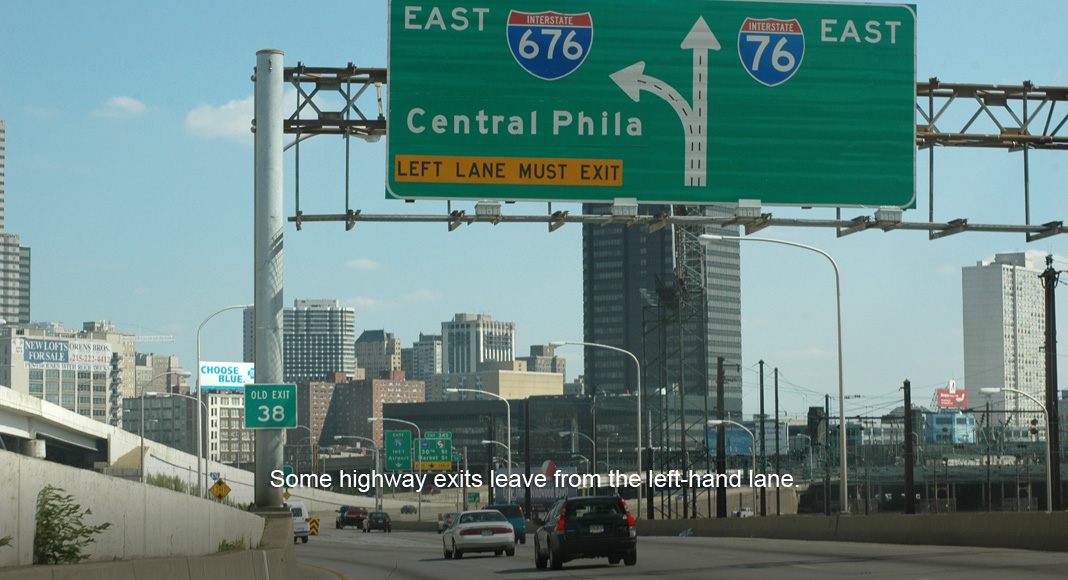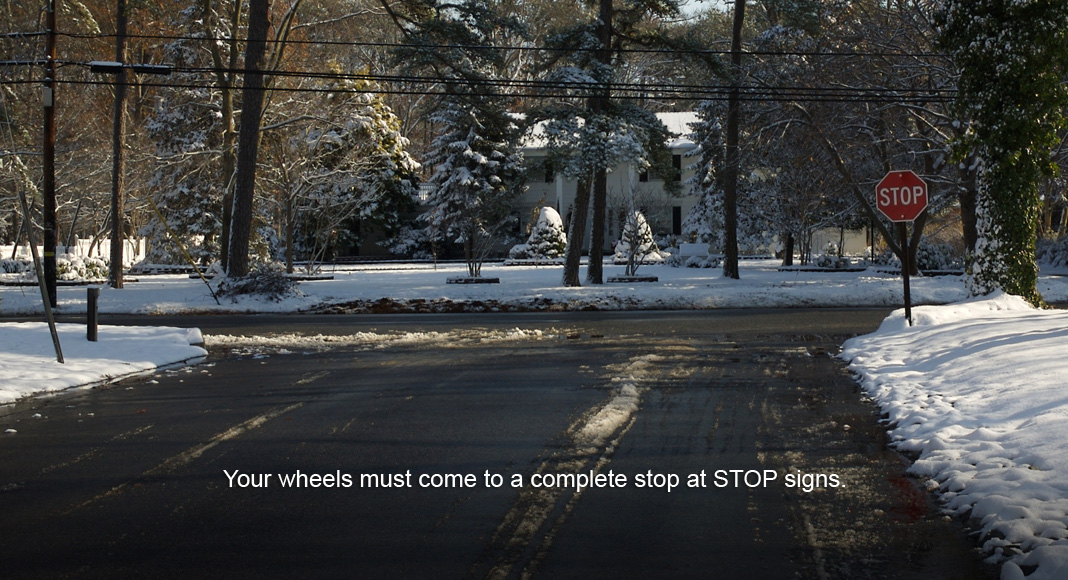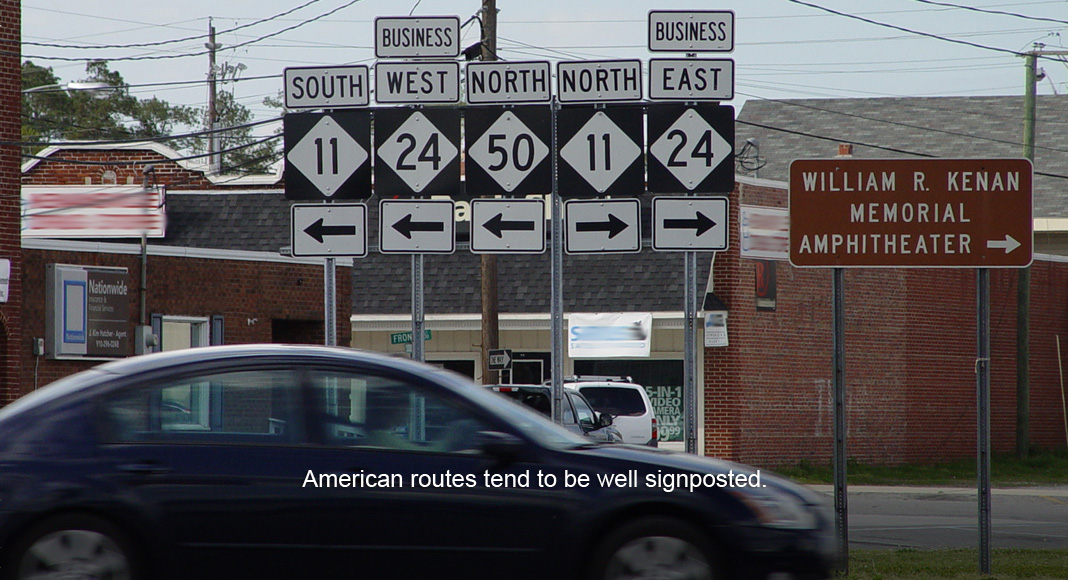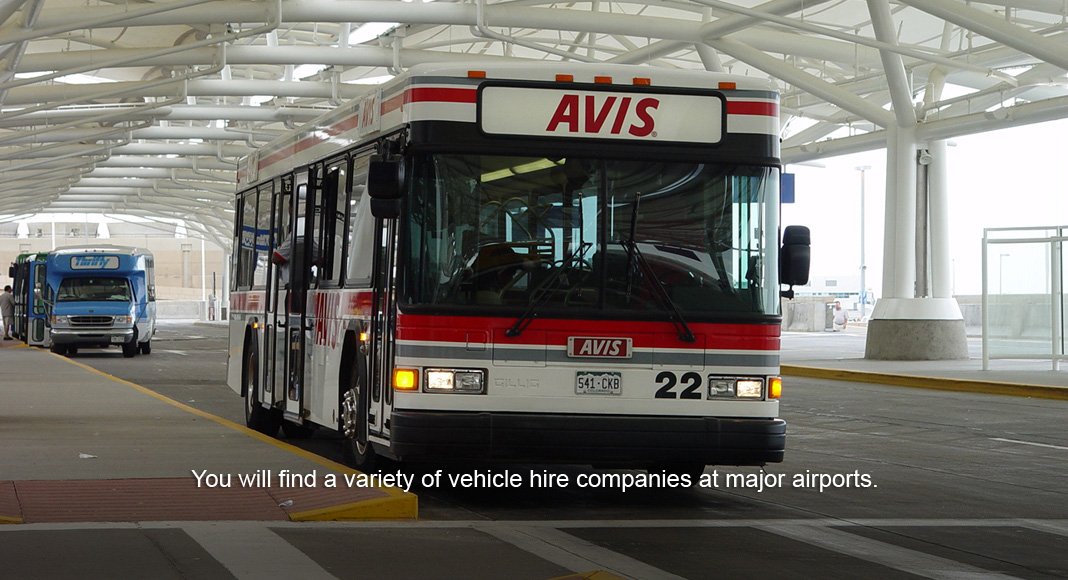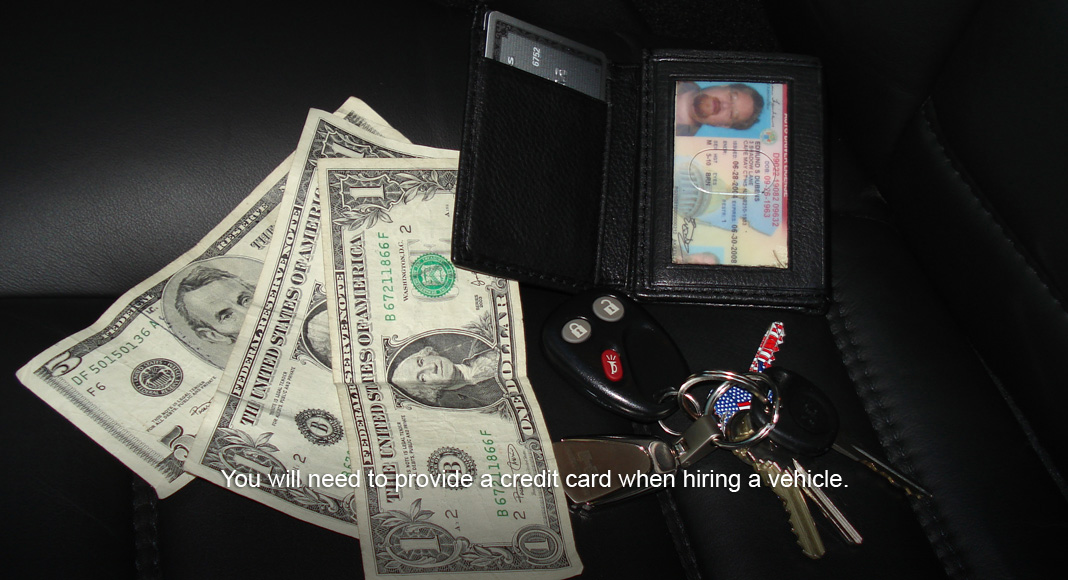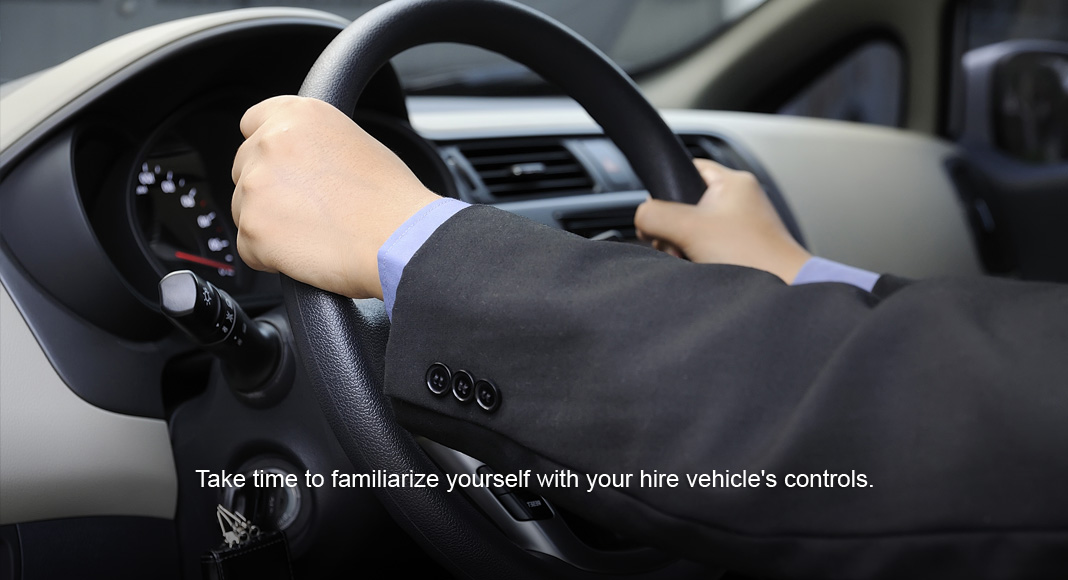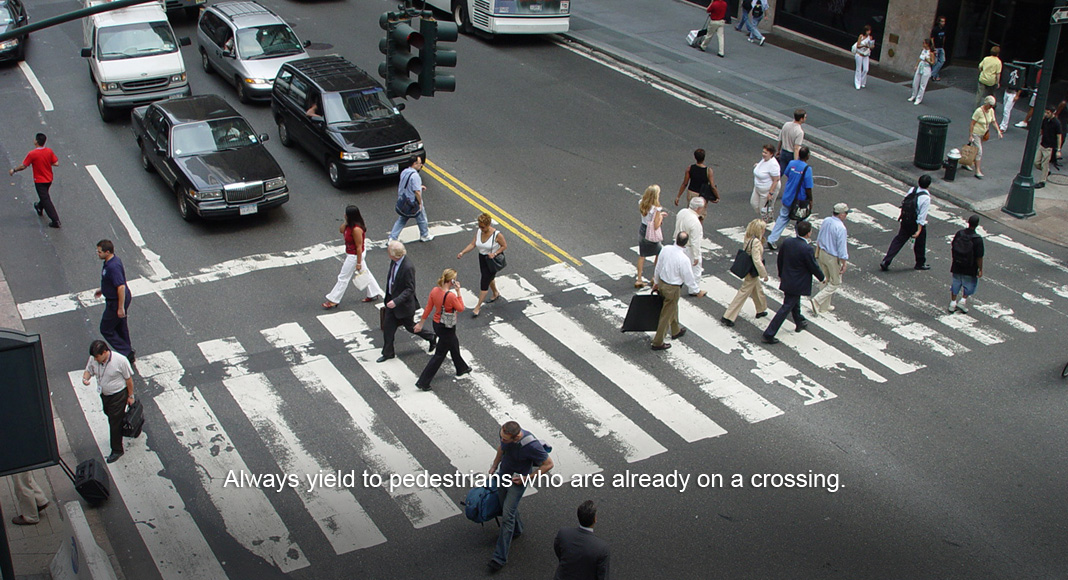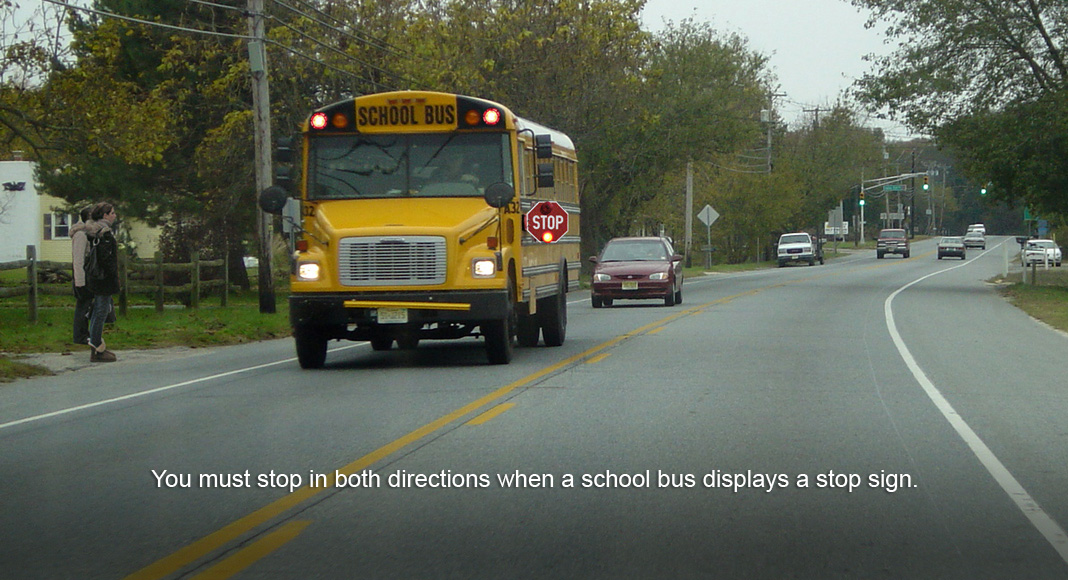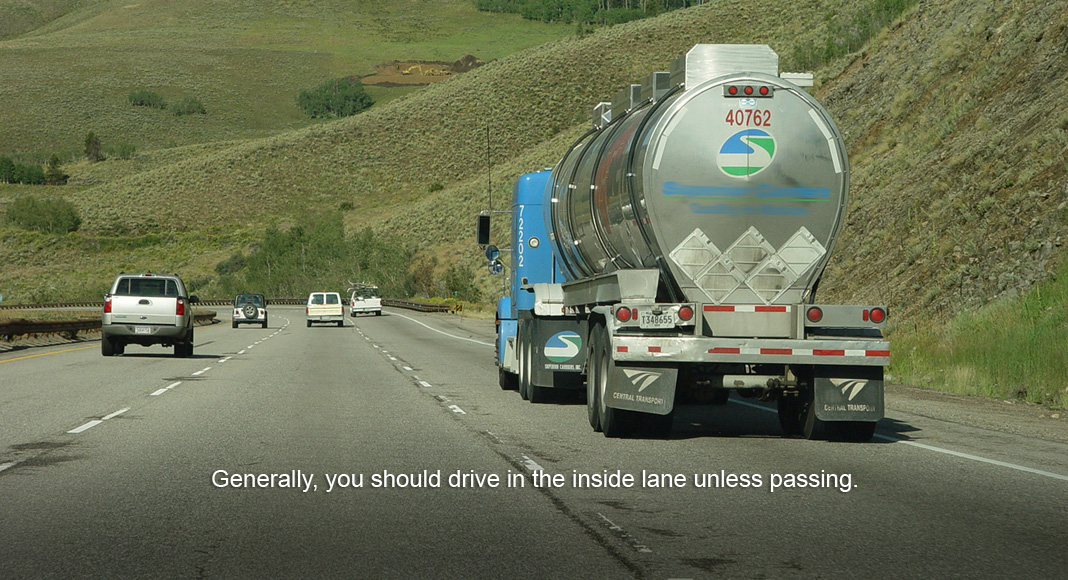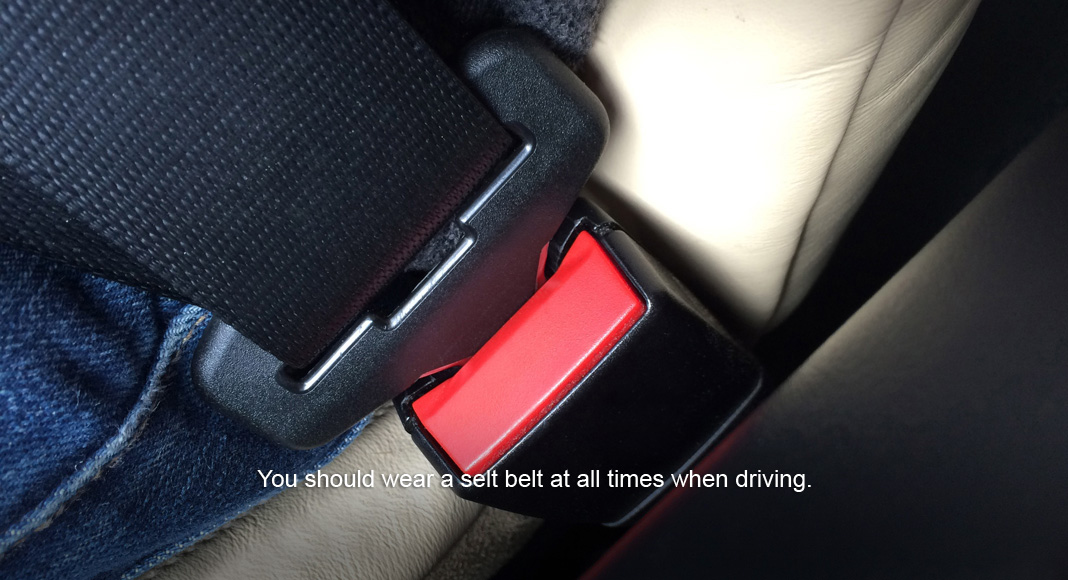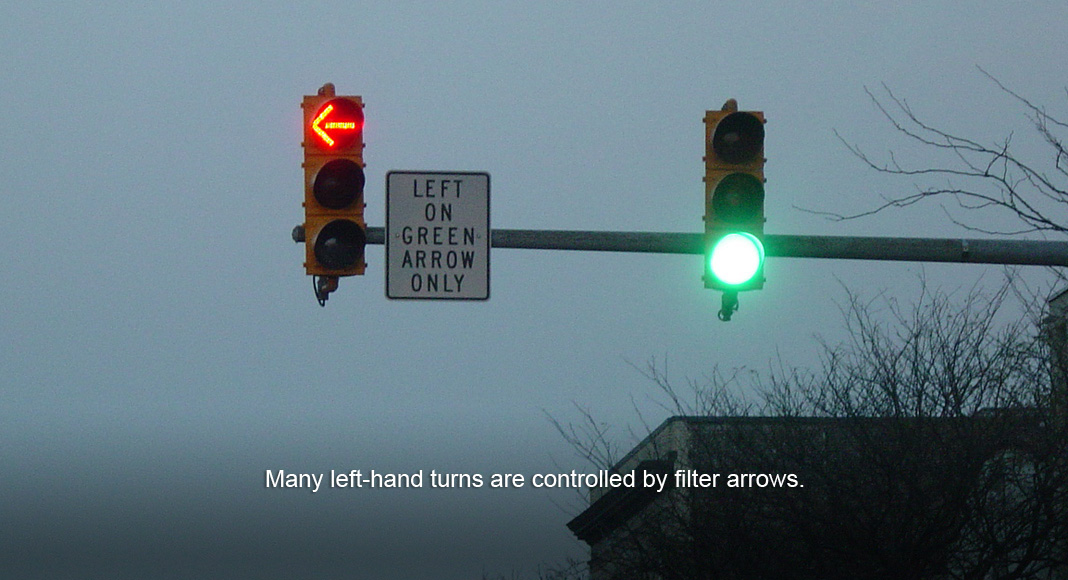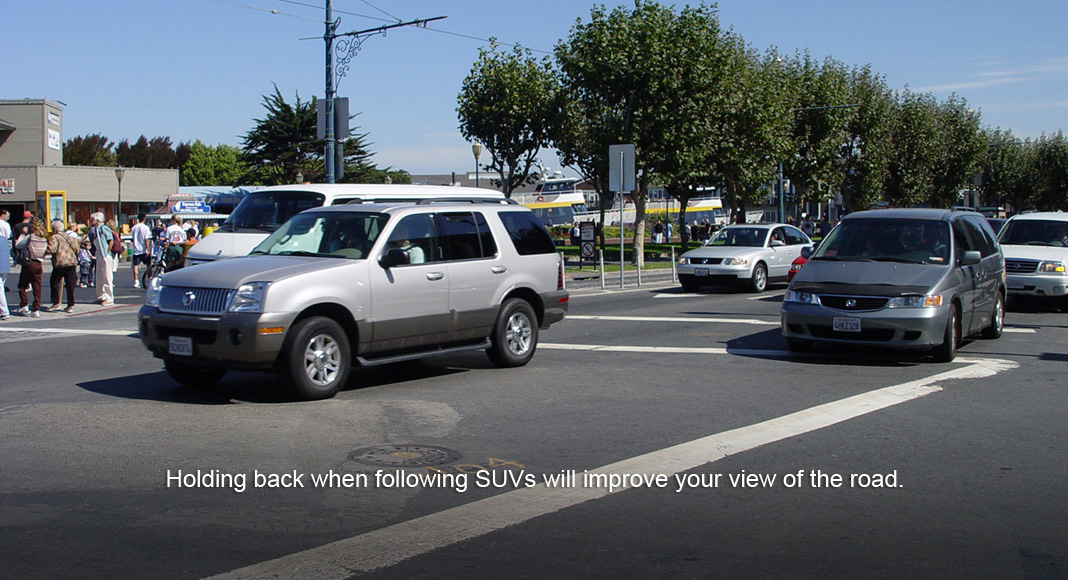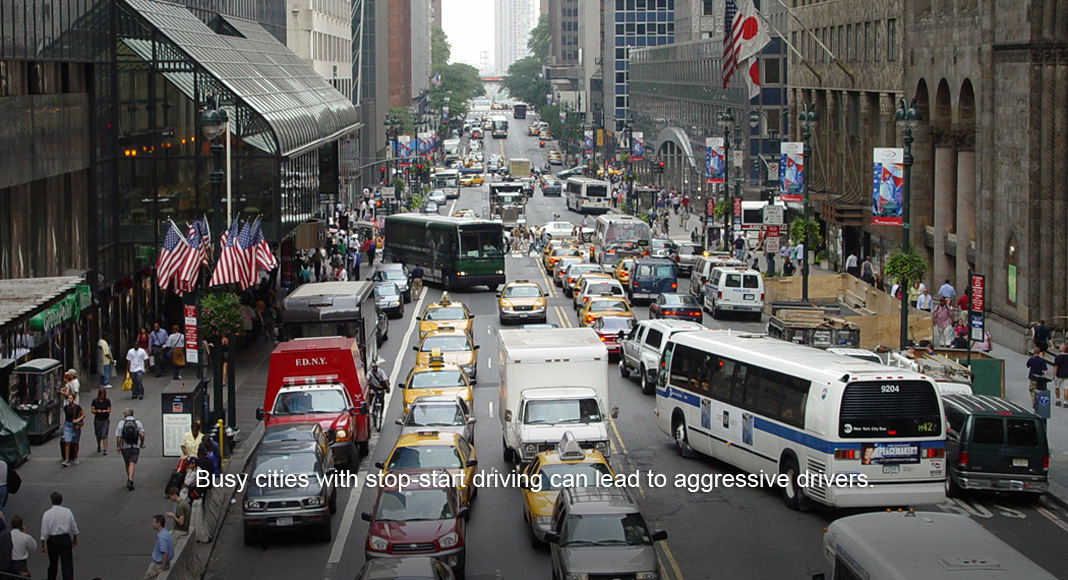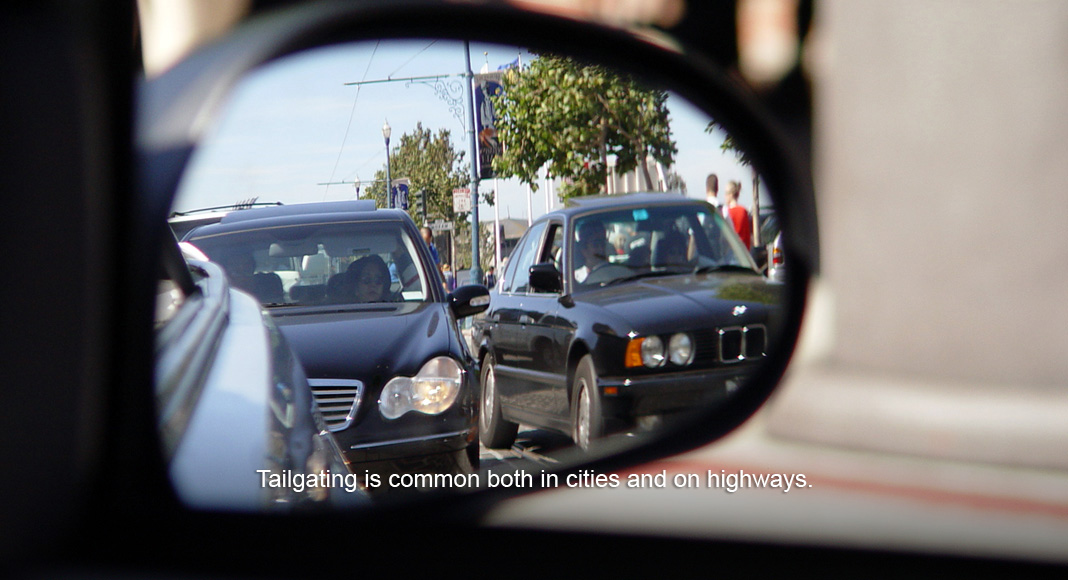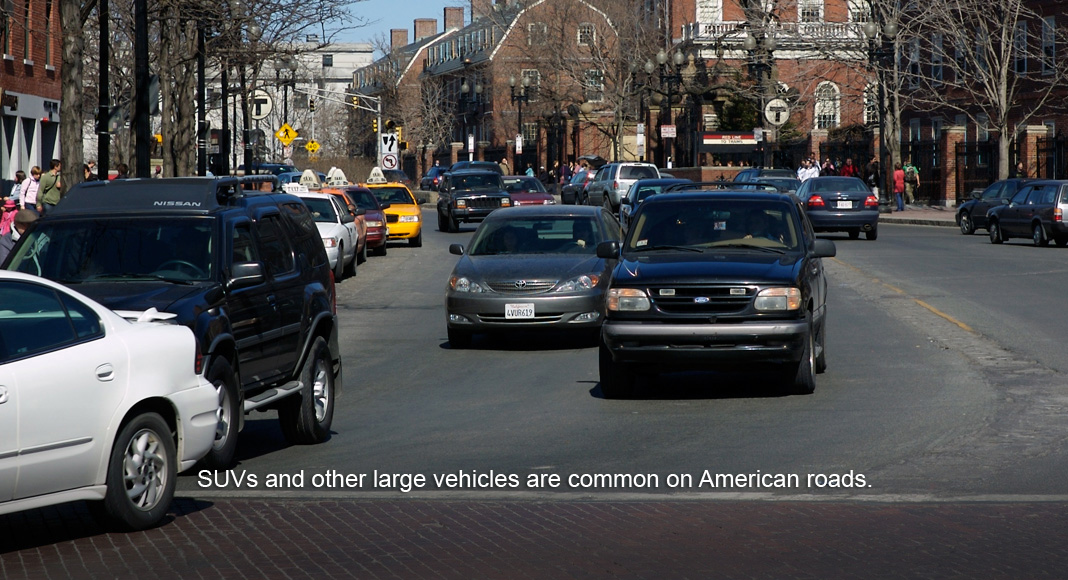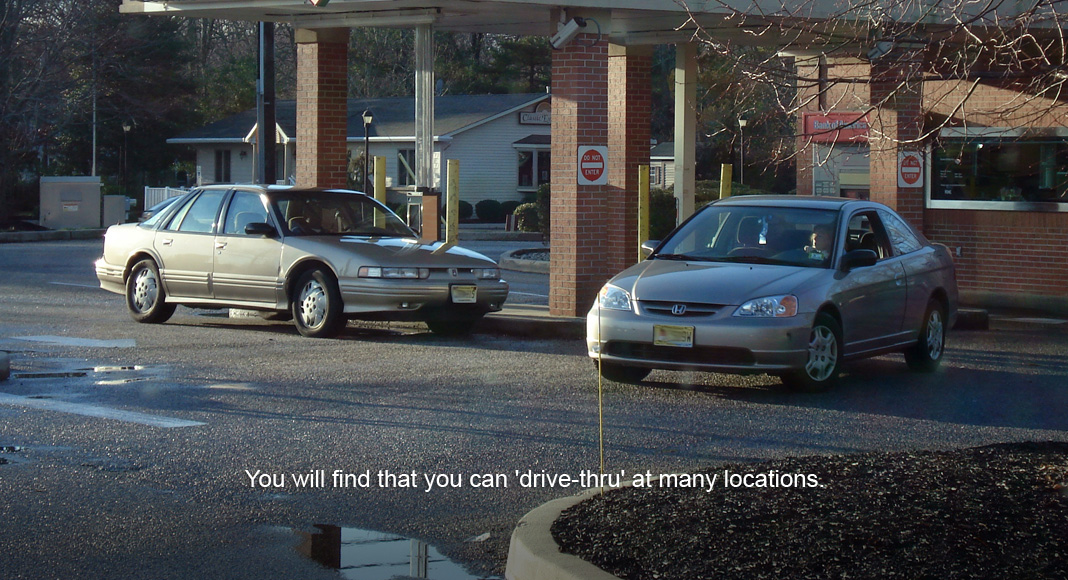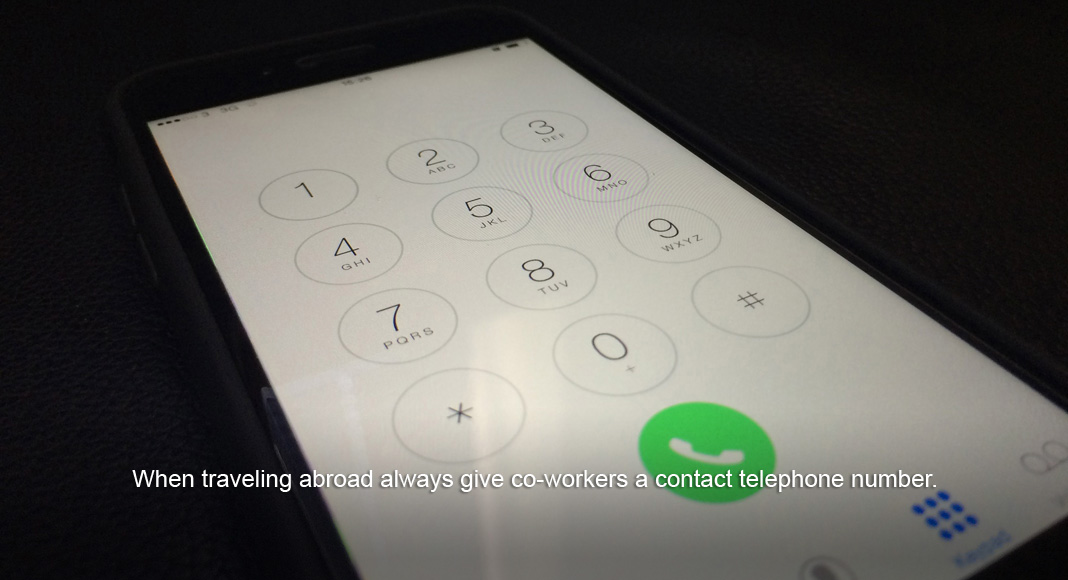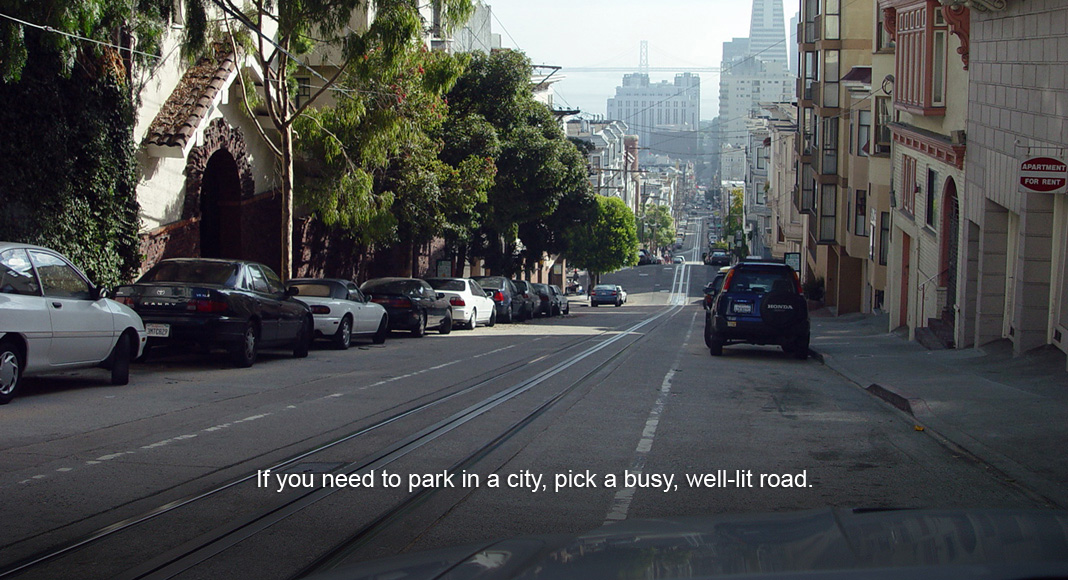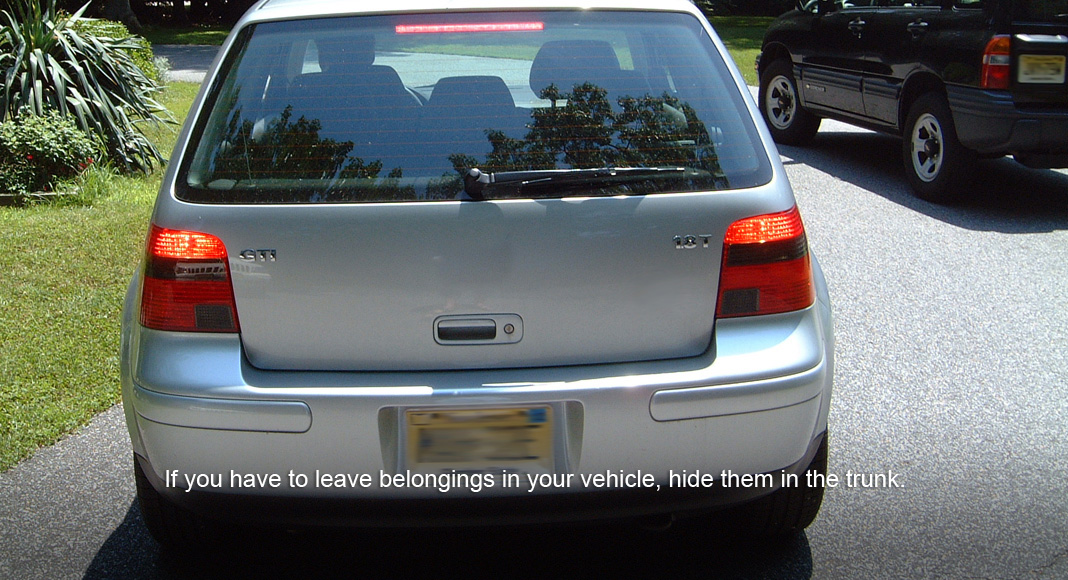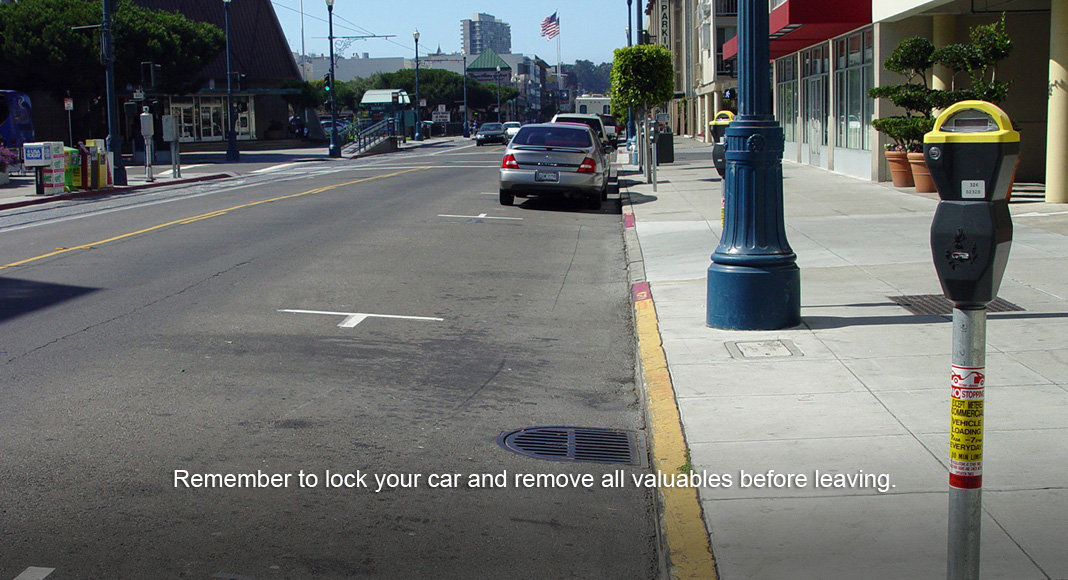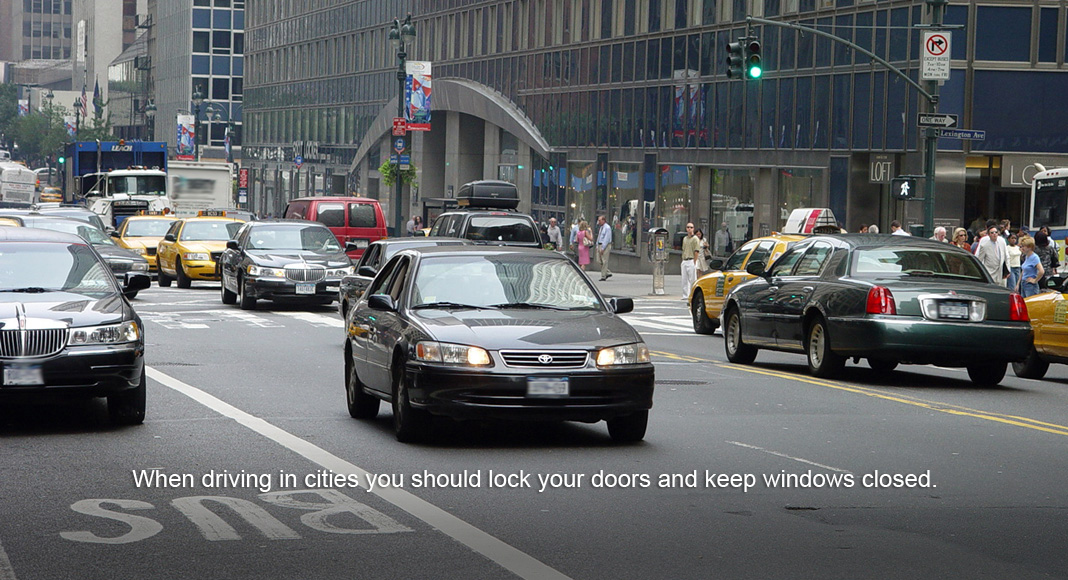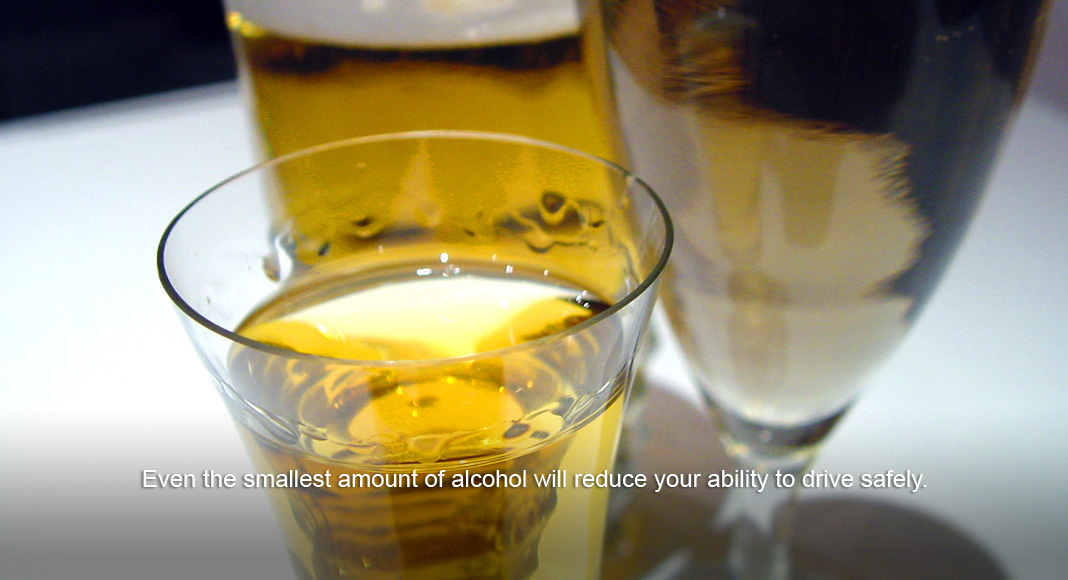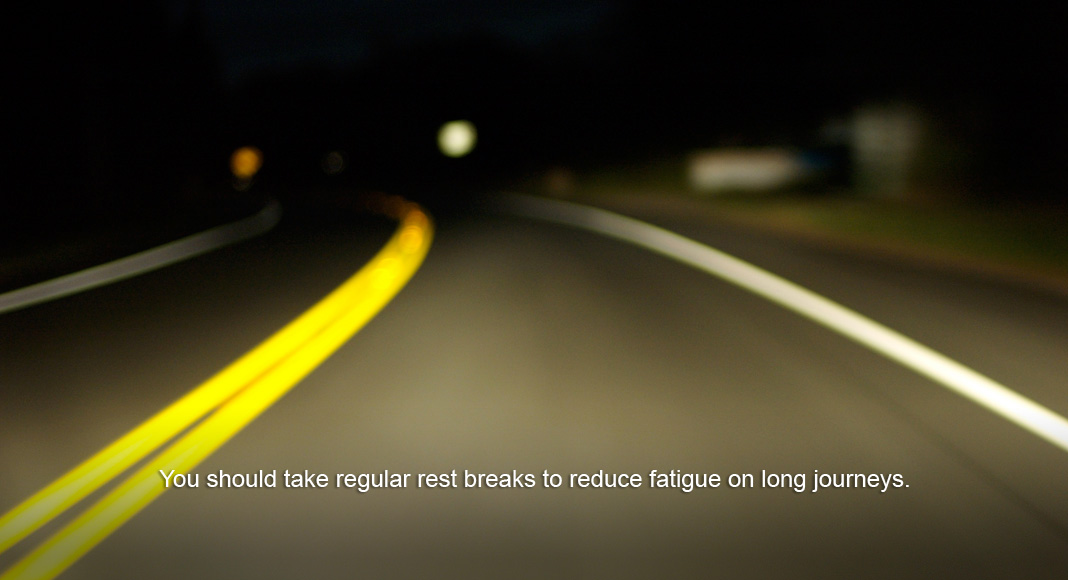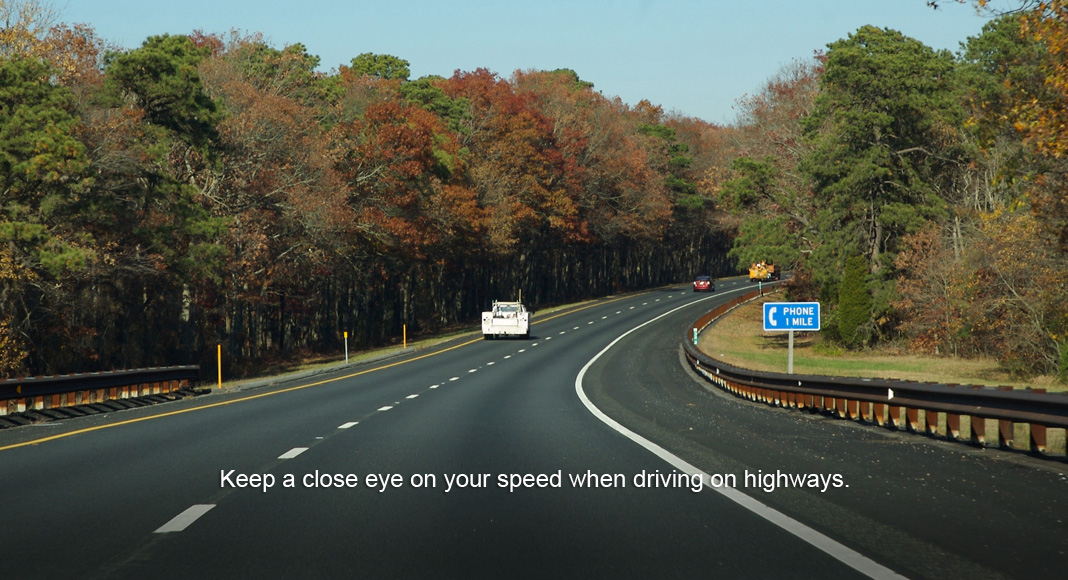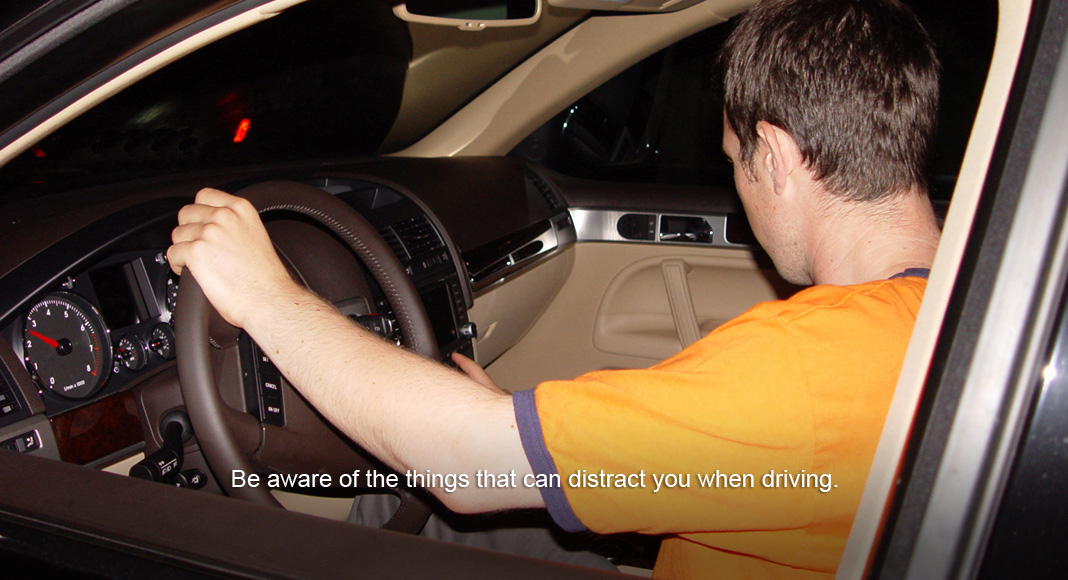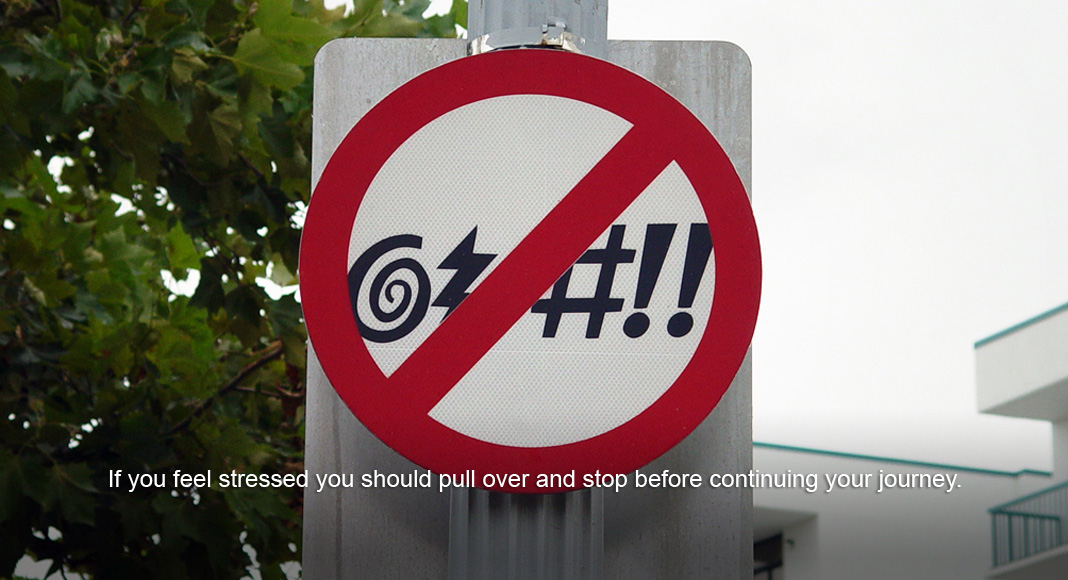Basics
General Information
In America you should drive on the right-hand side of the road.
English is the main language of the United States and is the primary language you should expect to be spoken throughout the country. Spanish is spoken by large populations in certain parts of the country including California and Florida.
You can contact all emergency services by dialing 9-1-1.
America is a vast country and because of this there are many long stretches of road. When driving along these roads be sure to take regular breaks to reduce fatigue and fill up with fuel whenever possible.
Many roads outside of cities are unlit and this can make it difficult to see and be seen during the hours of darkness. You should carry a high visibility vest in case you break down.
The States
Each of the 50 states has its own set of rules and regulations; however, all State traffic laws have common elements. For example, in all states it is mandatory to have vehicle insurance and to stop after a collision. You should ask if there are any special rules before renting a car or driving in an unfamiliar state for the first time.
Speed Limits
Speed limits vary by state. Some states, such as Texas, have speed limits as high as 80mph (130 km/h) with 75 mph (120 km/h) being more common, while New Jersey has a limit of 65 mph (104 km/h) and Hawaii has a maximum of 60 mph (97 km/h). Remember that the law states that you should drive only as fast as it is safe to do so up to the maximum posted speed on the road. Speed limits on the various road types usually fall within the following range:
- 25 – 30 mph (40 – 50 km/h) on residential streets
- 35 – 45 mph (55 – 70 km/h) on urban arterial roads
- 50 – 65 mph (80 – 105 km/h) on major highways inside cities
- 45 – 65 mph (70 – 105 km/h) on rural two-lane roads
- 55 – 70 mph (90 – 110 km/h) on rural expressways
- 65 – 75 mph (105 – 120 km/h) on rural Interstate highways
Speed limits are usually enforced by police officers using a RADAR gun to check the speed of vehicles. Any vehicle breaking the speed limit may be pulled over and given a ticket. Details of how to pay the associated fine can be found on the ticket. If you are driving in a rental car, non-payment of the fine will result in the fine being paid by the car rental company who will then charge the fine back to your credit card along with administration costs.
Highway Numbering
All north to south interstate highways are given odd numbers ‘Interstate 95’ while those running east to west are evenly numbered. Note that the full name for a road may not always be used and so ‘Interstate 95’ may often be shortened to ‘I 95’.
Fuel
You will find fuel filling stations in all towns and cities as well as at regular intervals along roads and highways. On highways, fuel filling stations will usually also have rest areas including restaurants and bathroom facilities.
You will generally find three grades of fuel (gas) on sale at filling stations: regular (sometimes referred to simply as Unleaded) which is the lowest grade (87 Octane) and therefore the cheapest; Plus is 91 Octane and is the middle grade (89 Octane is middle grade in California); Premium 93 Octane which is the most expensive. Diesel may also be available but it is not as common. Regular gas should be used in all rental cars unless another grade is specified by the car rental company.
Gas stations may be self-serve (where you fill your own vehicle) or may provide service (where you do not fill your own vehicle). This will usually be indicated by signs. Be aware that in some states it is illegal to fill your own vehicle.
Breakdown Assistance
If you are renting a vehicle you will often be provided with details of breakdown assistance. If the information is not provided or you will be driving your own vehicle, you may wish to consider joining the American Automobile Association, commonly referred to as the Triple A. Other than providing assistance should you break down, they also provide travel information and discounts at some hotels.
Tolls
Many American roads and bridges / tunnels carry tolls. Many tolls now use electronic payment methods such as FasTrak, ExpressAccounts or online via One-Time-Toll payment.
Most car rental companies provide the option of adding electronic toll payment facilities for the duration of your rental. The toll fees you incur will usually be billed to your credit card.
License And Documentation
Laws in each state can differ on how long you are able to drive in the USA using a non U.S. driving license. You may be able to drive up to 6 months on your non U.S. driving license, however, please check with your state’s department of motor vehicles on when to apply for a U.S. driving license in the state you reside. You can also find more information about how long you are able to drive on your non U.S. driving license here:
www.usa.gov/Topics/Foreign-Visitors-Driving.shtml
It is highly recommended you obtain an International Driving Permit before arriving in the USA. An International Driving Permit is only valid when carried with your home driving license so that must also be carried. If the driving license issued by your country does not contain a photograph, it would be wise to also carry your passport. Please check with the state Department of Motor Vehicles (DMV) to ensure they accept your non U.S. driving license.
You should at all times carry your driving license, proof of insurance, and vehicle registration with you when driving, although it is best to keep the items on your person in case the vehicle is stolen. If you are pulled over by the police, you will be requested to provide these items and a fine could result if you are unable to do so.
Wildlife
America has an abundance of wildlife and sometimes these wild animals will enter the roads without warning. Many smaller animals won’t cause any direct danger to you or your vehicle, but larger animals such as deer will be a danger. If you are driving along a road bordered by forest always be aware of movement in the trees. Watch out for road signs warning of deer or other wild animals and drive more cautiously.
Extreme Weather
America is a vast country and as such has extreme variations in weather depending upon where you travel. When driving through arid areas, you should carry plenty of fluids – both for you and your vehicle. If you will be driving in snowy conditions, it would be wise to have a blanket, shovel, and gloves in your vehicle. Tire chains will help to improve grip in especially bad conditions but should never be used on clear roads.
Road Signs
There are four types of road signs in America – Regulatory, Warning, Information, and Guide.
Regulatory Signs
Generally, any sign that contains a significant amount of red is a Regulatory sign. Examples would include ‘STOP’, ‘YIELD’, and ‘Do Not Enter’ signs.
Warning Signs
Any sign that is diamond-shaped is a warning sign. They are usually yellow in color. Examples could include signs warning of a lane ending, deer crossing, or a crossroads up ahead.
Motorist Information Signs
Motorist information signs are varied and can come in a range of shapes and colors. Examples include North / South Signs and road label signs such as ‘Route 9’ or ‘Interstate 95’.
Guide Signs
Guide signs inform you of the location of local amenities such as telephones, restaurants, and hotels. They are often square and have white images / text over a dark blue background.
Other Signs
Other signs that you should be particularly aware of:
- Black and yellow sideways arrows will appear around sharp curves.
Most highway exits leave from the right-hand lane, but occasionally you will find exits leaving from the left-hand lane. If this is the case, a special yellow ‘Exit Only’ panel will be added to the bottom of the highway guide sign.
Another tip is to look out for the positioning of the exit number in relation to the highway guide sign. If it is to the left then the exit will also be to the left.
Car Rental
Requirements
In most cases a foreign visitor to the United States is able to rent a vehicle using their driving license issued by their country of residence for a maximum period of 6 months (reference the “License and Documentation” section as laws vary from State to State).
You will have to be at least 21 years of age to be able to rent a vehicle and in some instances this will rise to 25. There may be additional charges levied for younger and older drivers.
Payment
When renting a car you will be required to provide a credit card for payment. Checks and cash are not generally accepted as any charges relating to your use of the vehicle such as parking or speeding fines can be charged to the credit card. VISA, Mastercard and American Express are all widely accepted.
Often the price quoted for renting a vehicle won’t include all applicable taxes or insurance waivers. You will usually have the option of paying extra to reduce the amount payable by you should you be involved in a collision. Always ask when renting a vehicle what the total costs will be.
Driving An Automatic
The majority of cars available for rent will be ‘Automatic’. If you have never driven a vehicle with an automatic gearbox before, be aware of the following:
- There are only two pedals and you will only use your right foot for driving. Keep your left foot to the side
- Keep your parking brake applied when putting your vehicle into drive as the car will immediately start to move forwards
- Your car will ‘creep’ forwards when in drive, so keep you footbrake applied at junctions / intersections
- When parking your vehicle, always move the gear lever into ‘P’ or ‘PARK’. This is often necessary before you are able to remove the keys from the ignition
Selected Rules Of The Road
States Have Their Own Laws
Each of the following laws listed may not apply to all states and it is recommended that you check the laws of the state to which you will be traveling prior to driving there.
In some states you are able to make a right-hand turn against the traffic signal (i.e. when there is a red light). You are only able to do this if the way is clear and after bringing your vehicle to a complete stop.
In some states you will be required to display dimmed headlights during rain. Remember that you should always turn your headlights on when visibility is reduced.
4-Way Intersections
4-way intersections with a STOP sign at every entrance are a feature of North American roads. The default rule is:
- Whichever vehicle stops first has priority
- If two vehicles stop at the same time, priority is given to the vehicle on the right
- If three vehicles stop at the same time, priority is given to the two vehicles going in opposite directions
- If four vehicles stop, drivers usually use gestures and other communication to establish right-of-way. In some areas, the custom is for the north-south or the more “trafficked” road to have priority, although this is rare
Passing On The Right
While some states such as New Jersey and Massachusetts have laws requiring traffic to keep right unless passing, undertaking or passing on the right is not illegal in many states, although it is generally accepted that slower traffic should use the right-most lanes.
Pedestrian Crossings
Pedestrian crossings typically are marked by a series of parallel white stripes in the road. They may or may not be regulated by traffic lights. You should always yield right of way to a pedestrian already on a crossing. In many areas of the United States, pedestrian crossings are the only permitted places for pedestrians to cross roads. Crossing at any other place may be deemed jaywalking which is a misdemeanor and carries a fine.
Traffic Lights
Traffic lights are the most common method of controlling traffic at intersections. The sequence of lights is red (stop), green (go), yellow (prepare to stop).
There may be additional lights, usually in the form of an arrow, to authorize turns. These are commonly used to permit traffic turning left to do so before the oncoming traffic (who would otherwise have right of way).
On some intersections you may see a flashing red light. In such cases you should treat the light as you would a stop sign.
Road Circles
Road Circles are not particularly common in the United States, although they do exist. They differ from roundabouts in other countries in that priority is generally given to entering vehicles. Rules for their use are not standard and therefore it is advised that you consult the Rules of the Road for the state(s) you will be driving in.
School Buses
Laws exist to protect school children boarding or disembarking school buses.
A general rule to follow is that if a stopped school bus displays alternating flashing red lights, a vehicle approaching the stopped bus from either direction must stop and wait until either the bus moves again, the red light stops, or directed to by a police officer, school crossing guard, or the driver of the bus.
Seat Belts
Nearly every US state has laws regarding the use of seat belts when operating a vehicle. 34 states have primary seat belt laws, meaning police officers may ticket a vehicle occupant for not wearing a seat belt, without any other traffic offense taking place. 15 states have secondary laws meaning police officers may issue a ticket for not wearing a seat belt if another traffic offense has taken place.
Cell Phones
Laws vary by state but in general, drivers are prohibited from using hand-held cell phones while driving. Most states also have specific bans on texting while driving. As a general rule DO NOT talk on your cell phone or text on your cell phone while driving – even if you have a hands free kit. Talking / texting while driving is very dangerous and should be avoided at all times while the vehicle is in motion. Please check your company policy as some state a full ban on cell phones altogether.
Driving Culture
General
Cars are an integral part of most Americans’ daily life and play a large part in the nation’s conscious. ATMs, pharmacies, and restaurants are commonly found as ‘drive-thrus’, and even if not legally the case, cars tend to take priority over pedestrians.
SUVs
Sports Utility Vehicles (SUVs) are more common than in most other countries as are pickup trucks. These larger vehicles may pose visibility problems when driving a smaller car so you will need to drive appropriately.
Behavior
Drivers, particularly in cities, tend to drive aggressively. Sounding of the horn is common, even for a momentary pause at a green light.
Personal Security
Always Lock Your Vehicle
Always lock your car, even when leaving your vehicle unattended for a few seconds. Never place items of value in your car and then leave it unattended. You never know who is watching. If you have to leave something of value in your vehicle, make sure it is in the trunk.
Never Leave Items On Display
Never leave anything to do with work in an unattended vehicle (industrial espionage is a thriving business). Always engage your steering lock before leaving your vehicle.
Drive With Your Windows Closed And Doors Locked
Always remove the key from the ignition when paying for fuel at a garage. Always drive with your doors locked and windows shut in areas with a tendency for stop / start driving – most car-jackings are opportunist in nature. Keep your doors locked and windows closed when driving through major city centers. In the event you are attacked, follow the car-jackers’ instructions to the letter – it may save your life.
Parking Safely
Always try to park away from places that could hide potential attackers. If possible, avoid unattended parking lots and those situated away from main roads where the streets are likely to be quieter.
When parking at night, choose a well-lit area. You will be able to see your vehicle clearly and have a better chance of seeing anyone who is hanging around.
Keep People Informed
When traveling in a foreign country you should provide someone in your native office with an itinerary of your day so that they know where you plan to be at all times. You should also supply them with your mobile telephone number and the number of each of your planned destinations.
Your Actions
Fatigue
You must take a break every two hours or sooner if you feel sleepy. Stop for at least 15 minutes and take a 10 minute snooze. Having a coffee or energy drink before your sleep can help you be more alert when you wake up (this is NOT a substitute for a good night’s sleep). Only continue your journey if you feel alert after your sleep.
Ensure that you get a good night’s sleep before making any long journey. If you are tired, do not drive.
Speeding
You must always abide by the speed limit.
In towns and built up areas, slow down to 20mph or below where appropriate – e.g. in heavily-built up areas or when schools let out.
On rural roads, slow down for curves and avoid passing / overtaking. On undivided highways and intersections, be especially careful and take your time to ensure maximum safety.
Ensure that you maintain at least a three-second gap between your vehicle and the vehicle in front. This is your braking distance in a crisis.
Distractions
You should not eat or drink on the move; reaching over for a sandwich or opening a drink will distract your attention from the road.
Avoid in depth conversations with passengers; it is vital that you maintain your concentration on the road ahead.
Alcohol And Drug Use
You must never drive if you have consumed alcohol or taken illegal drugs. Always check the label of prescription AND non-prescription drugs for fatigue related side-effects.
The evening before you drive you MUST NOT consume more than the legal limit of alcohol.
Eyesight
You must be able to read a number plate at 65 feet and have a good field of vision (120 degrees) if you plan to drive.
Ensure that you have your eyes tested every two years or sooner if you feel your vision has deteriorated.
Stress
Never drive if you are highly stressed. This can affect your ability to concentrate.



